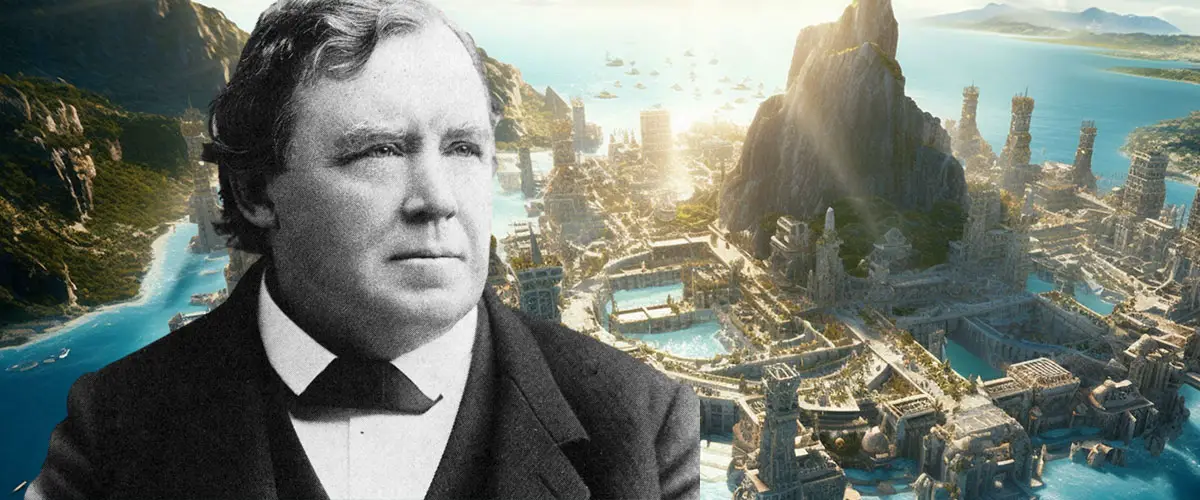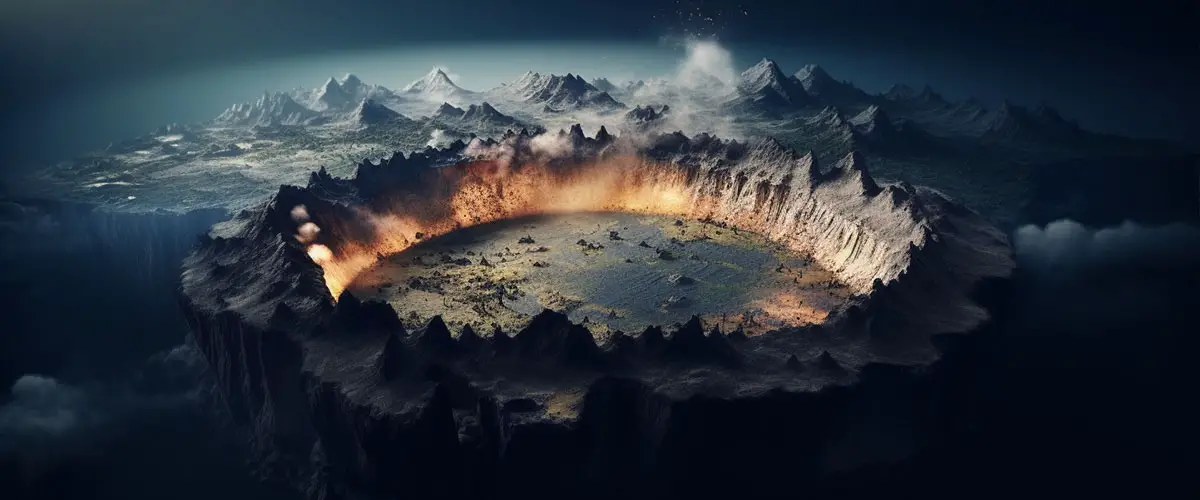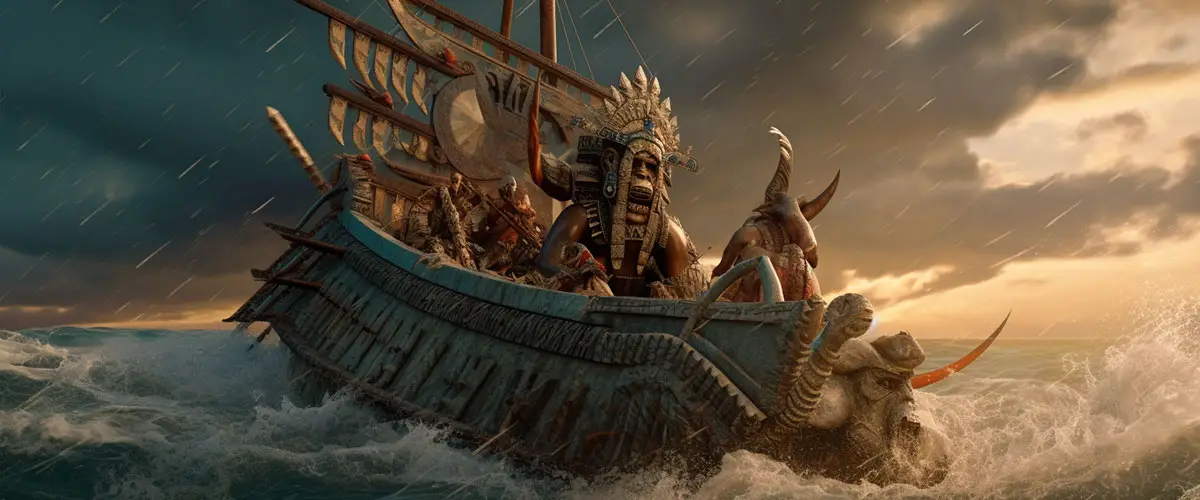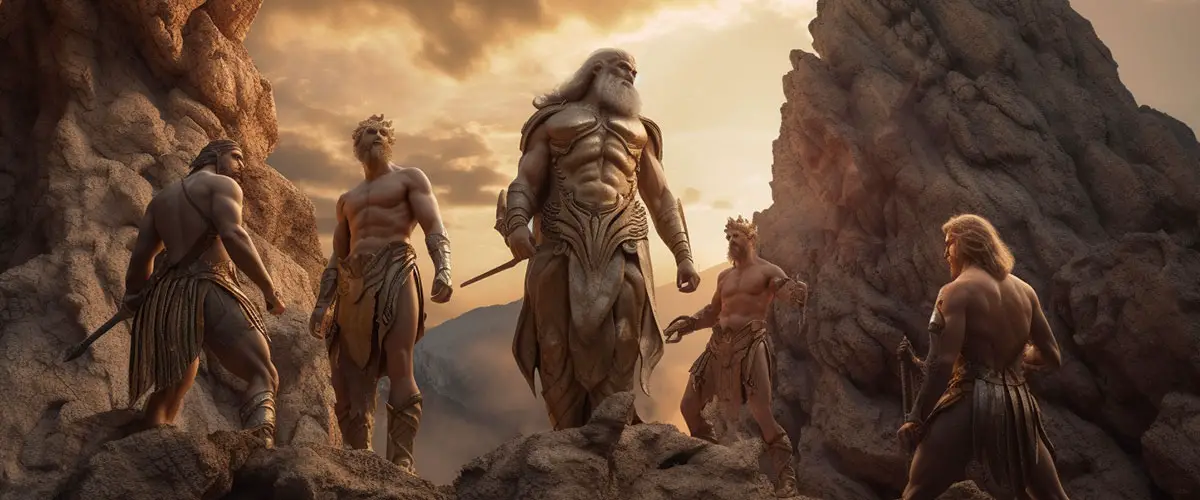Ignatius Donnelly was a congressman who sparked tremendous excitement in the subject of Atlantis during his lifetime in the 19th century. His book Atlantis: the Antediluvian World is a classic on the subject, and in this article we are going to look at Donnelly’s contributions to the subject of Atlantis.
Ignatius Donnelly considered Plato’s description of Atlantis to be historical fact. He believed that the Great Flood of the Bible was the event that destroyed the civilization, and compiled many Geological, natural, and cultural clues to support his thesis that Atlantis was real.
Contained within his book are many fascinating ideas, such as the strange similarities between the Mayan alphabet and Phoenician writing, as well as many other observations from ancient cultures and nature that raise serious questions.

Donnelly was a scholar of Plato’s account of Atlantis
Donnelly was a dedicated student of Plato’s description of Atlantis, which is considered the first and most official historical record of the lost civilization. Plato was unclear on wither he meant it to be an account of actual history, and many scholars have interpreted his writings on Atlantis to be fiction, and a literary device to comment on what makes the perfect society.
Plato stated that he had learned of Atlantis from an earlier Athenian thinker named Solon, who learned of Atlantis while studying with priests in Egypt. Donnelly expanded upon this well known fact, suggesting that Plato may have even inherited an unfinished manuscript from Solon, in which he had written extensive descriptions of Atlantis.
Donnelly was an outspoken critic of the theory that Plato’s descriptions of Atlantis were fiction. He considered it to be actual history, pointing out that much of Plato’s description is not relevant to the narrative of the story. Plato described Atlantis as waging war unsuccessfully on Athens before being destroyed by the gods for its hubris. However, Plato included lengthy descriptions about the agricultural practices of Atlantis and many other details that have nothing to do with its war and eventual punishment.
Donnelly Compiled Extensive Geological Evidence of a Lost continent
Building upon Plato’s descriptions, Donnelly added extensive geological research to support his claim that Atlantis had been a continent in the Atlantic before it sank.
Donnelly looked to layers of coal deposits to show how land has repeatedly risen above sea level long enough for vegetation to grow, before sinking below sea level again. He listed many large natural disasters that had occurred within recent memory of his lifetime (1831 – 1901), such as an earthquake that killed 60 000 people in Portugal in 1775, a volcano off the coast of Iceland killing 20% of the inhabitants of the small nation, and a Moroccan village of 10 000 people being swallowed when the ground opened up.
His research described the surface of our planet as being very different during the time of Atlantis than it is now. A large continent existed where the North Atlantic Ocean now is, and another where is now Scandinavia. Great Britain was 1700 feet underwater. Australia is the tip of a large continent during Atlantis that was called Lemuria, where the human race first began.

The Canary Islands were part of Atlantis, as well as the Greek island of Santorini, and the Portuguese islands of Azores. Greenland was the northern tip of Atlantis according to Donnelly, and is currently sinking.
Parts of the United States are currently sinking, while Northern Europe and the Atlantic coast of South America are rising. As ridges of land rose in the Atlantic Ocean, the Gulf Stream flow of water was blocked, causing the Glacial Period. When Atlantis sank, it allowed warmer water from the tropics to flow north, causing the snow and ice of Europe to melt. The Gulf Stream flowed around Atlantis, and continues in the same circular motion initially caused by the shape of the Atlantean continent.
You can read more about the evidence that Atlantis existed here.
Evidence of Atlantis found in Plants and Animals
Donnelly also looked to plant and animal life to find evidence of a lost continent in the Atlantic Ocean. According to his research, the large number of animals that exist in both North America and Europe indicate that these two continents were in contact with each other in the past. For example, wolves, elk, reindeer, and other animals are the same in both continents, which Donnelly interpreted to mean that they had been able to roam between the two distant regions in the past because they had been connected by a land mass that sunk into the Atlantic Ocean.
Donnelly found similar examples of shared plant life int eh two regions. He believed that not only was this evidence to support his thesis, but also that the plant life indicated that humans had played a role in spreading the plant life across vast regions.
Believed Atlantis was destroyed in the Great Flood of the Bible
Another core component of Donnelly’s Atlantis thesis is his interpretation of the Great Flood, as described in the Genesis of the Bible. Memories of the great deluge that destroyed Atlantis exist in Hebrew, Aryan, Phoenician, Greek, and Cushite traditions, whom Donnelly considered to be the descendants of Noah, the protagonist of the Great Flood story, who built the Ark in order to survive the flood and repopulate the world.
Similar to Plato’s descriptions of Atlantis in which the inhabitants of Atlantis became more and more immoral before being destroyed by the gods by a massive flood, Genesis describes God become upset by the wickedness of humanity and deciding to destroy them.
And God said unto Noah, the end of all flesh is come before me; for the earth is filled with violence through them; and, behold, I will destroy them with the earth.
The Bible describes God instructing Noah, who was 600 years old at the time, to build an ark in order to live through the natural disaster God was about to unleash on the world.
even I, do bring a flood of waters upon the earth, to destroy all flesh, wherein is the breath of life, from under heaven; and everything that is in the earth shall die. But with thee will I establish my covenant; and thou shalt come into the ark, thou, and thy sons, and thy wife, and thy sons’ wives with thee. And of every living thing of all flesh, two of every sort shalt thou bring into the ark, to keep them alive with thee.
Donnelly believed that the Great Flood was an actual historical event that had been remembered by the various cultures that descended from Noah, and was eventually written about in the Bible. He compared the descriptions of the Great Flood with similar myths from other cultures in Central America, suggesting that these people had also been survivors of Atlantis, of because of this had memories of the flood in their culture. Read more about the destruction of Atlantis here.
Myths of the Great Flood found in Other Cultures
Similar stories to the Great Flood of the Bible can be found in Toltec, Aztec, and Mayan mythology.
North and South America were colonies of Atlantis and had been in continual contact with one and other, sharing language, religion, and blood. Atlantean colonies existed in the Yucatan peninsula, Brazil, Bolivia and Peru, as well as up to the Mississippi River.
The indigenous people of Mexico had symbols and paintings of a figure named Coxcox who saved himself and his wife by constructing a boat out of cypress wood. Paintings of Coxcox have been found by the Aztecs, Miztecs, Zapotecs, Tlascaltecs, and Mechoa- caneses.

These myths described how Coxcox, also known as Tezpi, crafted and sailed a large vessel with his wife and children, as well as animals and grains, in order to preserve the human race. Tezpi sent a vulture to explore, who went and fed on the carcasses of the deceased people who covered the earth.
Tezpi sent out other birds, and the humming bird returned with a leafy branch in its mouth. This signified to Tezpi that the earth had begun to vegetate, and he left his boat on the mountain.
Similar flood stories are also found in Indian, Greek, Bardic, and Scandinavian mythology.
Comparing Mediterranean and Central American Cultures
In addition to the myths of a flood destroying the world, Donnelly found other similarities between Mediterranean and Indigenous Central American Cultures. For example, they have similar beliefs about baptism, and burial.
The hieroglyphs of the Mayans share similarities with the alphabet of the Phoenicians, both of whom inherited many cultural artifacts from the Atlanteans according to Donnelly. Also, certain dialects from the various descendants of the Toltecs share sounds with the Hebrew language, indicating a potential shared past.
Anomalies of the Bronze Age
Donnelly studied the Bronze Age to find clues of an ancient lost civilization. Bronze is a metal alloy created from adding tin to copper. Extensive bronze remains have been found by archeologists in parts of the world such as Ireland and Denmark, where very little discoveries of only copper have been found. This suggests that the bronze tools had been transported from elsewhere, and casts doubt on the official historical records. Donnelly interpreted the discover of bronze artifacts as being evidence to suggest contact between Europe and North America by an advanced ancient civilization.
He theorized that the copper used to make the bronze was mined near Lake Superior in modern North America, and the Atlanteans used bronze in pottery, weapons, and jewelry. The bronze artifacts discovered by archeology, such as in northern Europe, were colonies of Atlantis.
Atlantis and the Gods of Greece
Donnelly interpreted Greek mythology, as written by Homer, Hesiod and other Greek poets, as being historical records rather than fiction. He believed the Greek gods were the royalty of Atlantis, and that Greek mythology was the attempt of the relatively primitive Greek people to comprehend the vastly more advanced Atlanteans.
Donnelly pointed out that the Greek gods did not create the world, but rather where beings who were born into the world. The myths of their lives describe them as being very human, having romances, stealing from each other, and so on.

The Greek gods lived in Mount Olympus in mythology, and Donnelly argued that the name Olympus was the result of gradual shifts in spelling and pronunciation of the actual name of where the gods lived, which was Atlantis.
Donnelly considered Poseidon to be the founder of Atlantis, as is generally recognized in Greek literature, but also that Zeus ruled over Atlantis for a great length of time. Read more about Greek mythology here.
Recommended Reading
If you want to continue exploring the subject of Atlantis more deeply, you can see which books I recommend by clicking here.
